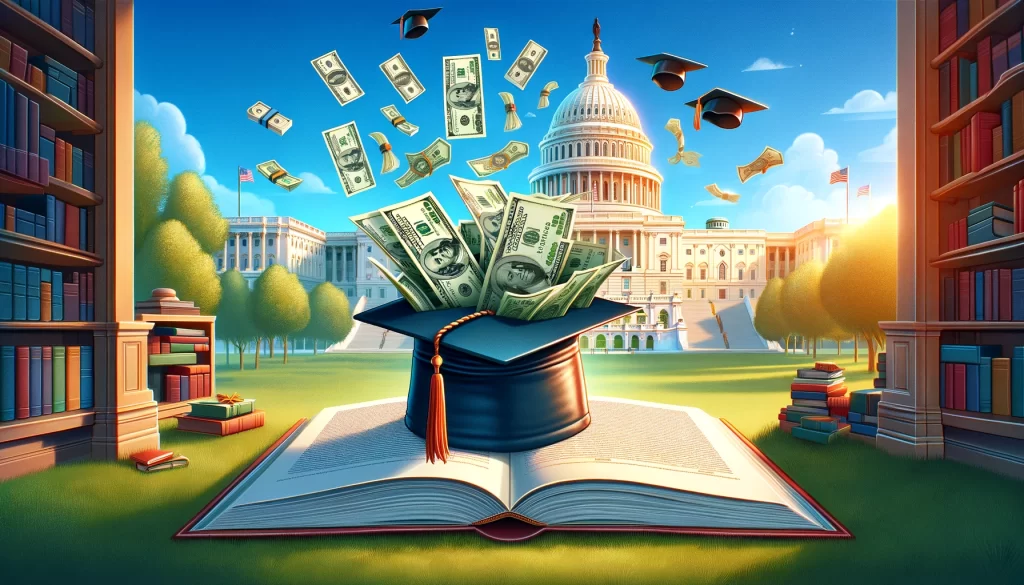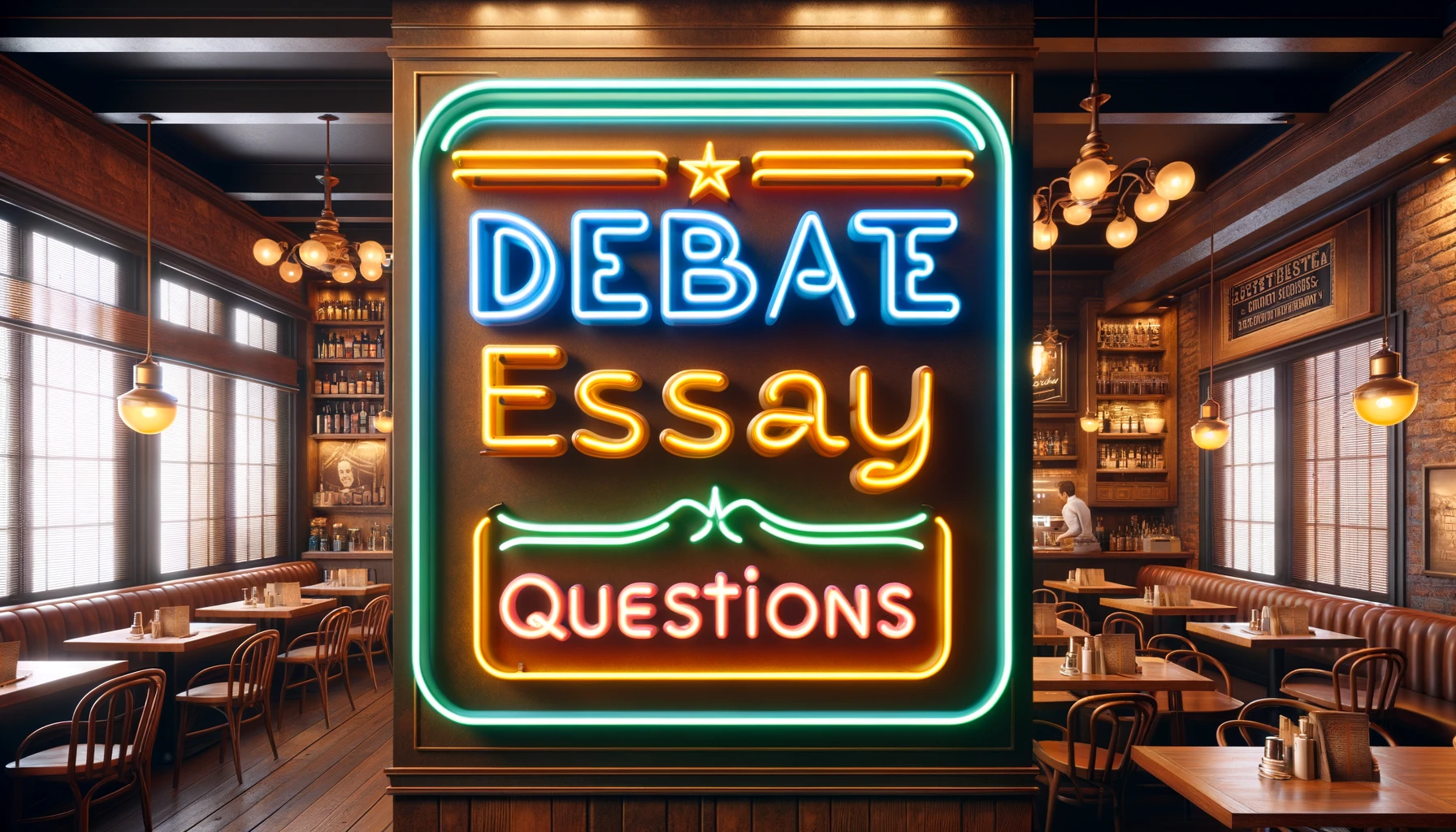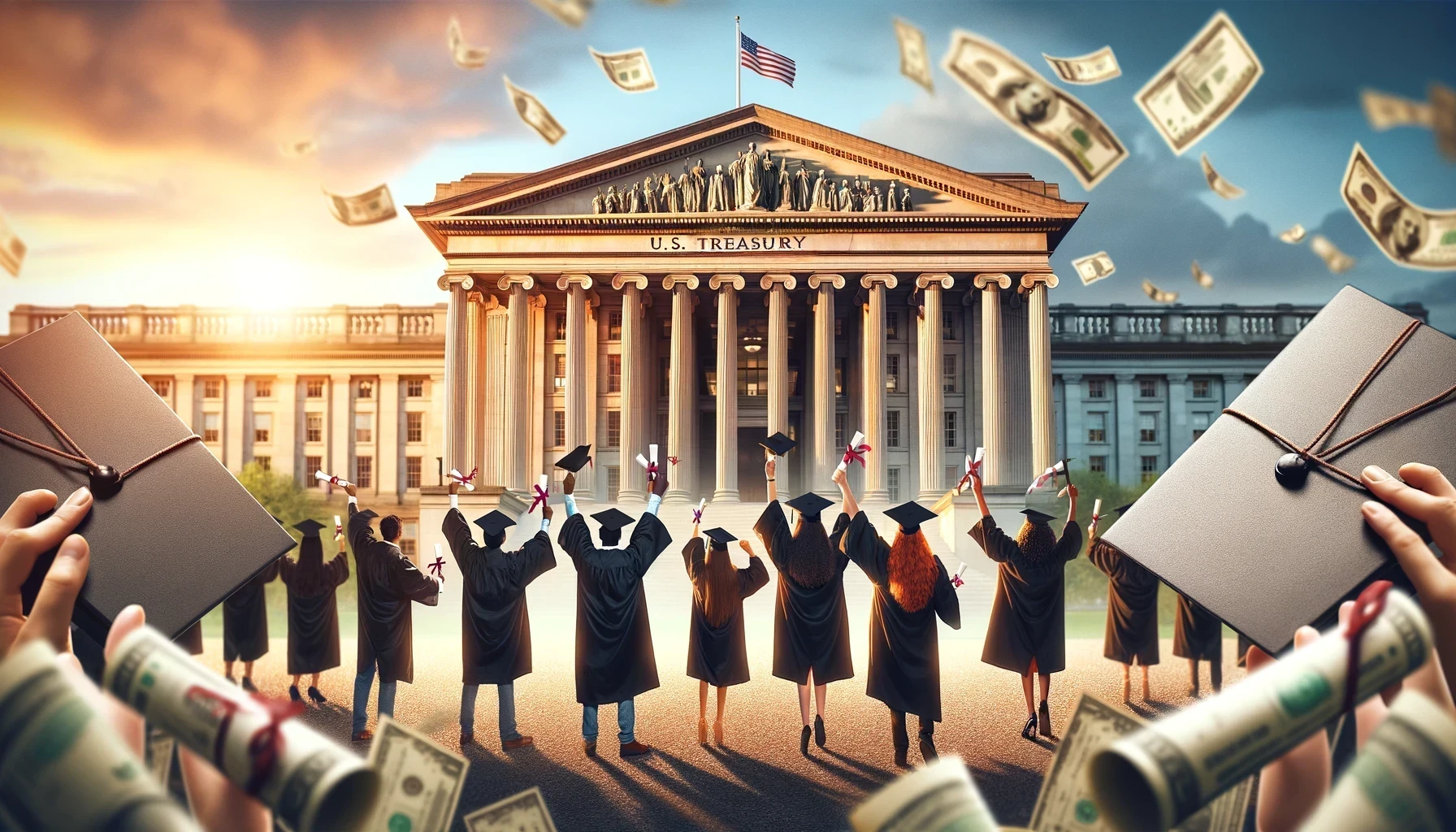On Wednesday, the Biden administration announced the approval of an additional $7.7 billion in student loan debt forgiveness. This latest round of debt cancellation benefits 160,500 borrowers, bringing the total amount of forgiven student loan debt under President Biden to $167 billion since he took office.
Overview of Debt Forgiveness Efforts
This ongoing effort aims to alleviate the financial burden of student loans for millions of borrowers. Since the beginning of his term, President Biden has focused on providing relief through various programs. This strategy includes the Public Service Loan Forgiveness (PSLF) program, the Saving on a Valuable Education (SAVE) plan, and adjustments to income-driven repayment (IDR) plans.
Education Secretary Miguel Cardona stated, “The Biden-Harris Administration remains persistent about our efforts to bring student debt relief to millions more across the country, and this announcement proves it.”
Details of the Latest Forgiveness Round
The new round of debt forgiveness includes:
- Public Service Loan Forgiveness: $5.2 billion in relief for 66,900 borrowers, including teachers, firefighters, and other government and nonprofit workers.
- SAVE Plan: $600 million for 54,300 borrowers, which ties monthly payments to income and household size.
- Other Income-Driven Repayment Plans: $1.9 billion for 39,200 borrowers through administrative adjustments correcting the misuse of forbearance by loan servicers.
Many borrowers have already received emails notifying them of their debt cancellation. According to the Education Department, these cancellations will be processed in the coming weeks.
Challenges and Criticisms
Despite the progress, the initiative has faced significant opposition. Critics argue that student loan forgiveness is unfair and that it transfers the debt burden to taxpayers who did not take out loans or pursue expensive degrees. Additionally, over a dozen Republican state Attorneys General have filed lawsuits attempting to block the administration’s efforts.
The administration’s previous attempt at mass debt cancellation was blocked by the Supreme Court. In response, the Biden administration adopted a more incremental approach, involving a lengthy rule-making process. The broader debt forgiveness program, aiming to benefit nearly 30 million borrowers, is still under development and faces potential legal challenges.

Impact and Future Plans
President Biden emphasized the importance of higher education accessibility, stating, “From Day 1 of my administration, I promised to fight to ensure higher education is a ticket to the middle class, not a barrier to opportunity.”
The administration’s actions have provided significant relief to borrowers, with one out of every ten federal student loan borrowers now approved for some form of debt forgiveness. The SAVE plan alone has provided relief to over eight million borrowers, with 4.6 million benefiting from $0 monthly payments.
The Biden administration continues to explore additional methods to extend debt cancellation, including discharging loans for students defrauded by their schools. Recently, the Department of Education forgave the federal loans of 317,000 former students of the Art Institutes.
The administration’s larger goal of addressing runaway interest on loans remains pending as new rules are finalized. Public comments on part of this plan recently concluded, drawing over 65,000 responses.
This article is based on the following articles:
https://www.dailymail.co.uk/news/article-13445153/biden-student-loan-debt-forgiveness-save-plan.html

Background Information
1. What are Student Loans?
Student loans are a type of financial aid designed to help students cover the cost of higher education, including tuition, books, and living expenses. Unlike scholarships or grants, student loans must be repaid, typically with interest.
2. Types of Student Loans
There are two main types of student loans in the United States:
- Federal Student Loans: Issued by the government, these loans often have lower interest rates and more flexible repayment options. Examples include Direct Subsidized Loans, Direct Unsubsidized Loans, and Direct PLUS Loans.
- Private Student Loans: Provided by private lenders such as banks or credit unions, these loans usually have higher interest rates and less flexible repayment terms.
3. The Burden of Student Loan Debt
The cost of higher education has risen significantly over the past few decades, leading many students to borrow large sums of money. This has resulted in a growing student loan debt crisis, where many borrowers struggle to repay their loans. As of 2024, the total student loan debt in the United States exceeds $1.7 trillion.
Student Loan Forgiveness Programs
1. Public Service Loan Forgiveness (PSLF)
The PSLF program was established to encourage individuals to work in public service jobs. To qualify, borrowers must make 120 qualifying monthly payments while working full-time for a qualifying employer (such as government or nonprofit organizations). After meeting these requirements, the remaining loan balance is forgiven.
2. Income-Driven Repayment (IDR) Plans
IDR plans adjust monthly loan payments based on the borrower’s income and family size. There are several types of IDR plans, including:
- Income-Based Repayment (IBR)
- Pay As You Earn (PAYE)
- Revised Pay As You Earn (REPAYE)
- Income-Contingent Repayment (ICR)
Under these plans, any remaining loan balance is forgiven after 20 or 25 years of qualifying payments.
3. Saving on a Valuable Education (SAVE) Plan
The SAVE plan is a specific type of IDR plan introduced by the Biden administration. It aims to provide more accessible and affordable repayment options, with features like lower monthly payments and a shorter time-to-forgiveness for certain borrowers.
Biden Administration’s Approach to Student Loan Forgiveness
1. The Initial Plan
President Biden’s original plan aimed to provide widespread student loan forgiveness, potentially canceling debt for millions of borrowers. However, this plan faced legal challenges and was ultimately blocked by the Supreme Court.
2. Incremental Approach
After the initial plan was blocked, the Biden administration adopted an incremental approach to provide relief. This involved making adjustments to existing programs, such as PSLF and IDR plans, to cancel smaller amounts of debt for specific groups of borrowers.
3. Legal and Political Challenges
The administration’s efforts to cancel student loan debt have been met with opposition from various groups. Critics argue that such measures are unfair to those who did not take out loans or have already paid off their debts. They also contend that the cost of debt forgiveness will be borne by taxpayers. Additionally, Republican state Attorneys General have filed lawsuits to block these efforts, citing concerns about the financial burden on taxpayers.
4. The SAVE Plan
Introduced as part of the administration’s broader strategy, the SAVE plan has provided relief to millions of borrowers by reducing monthly payments and shortening the forgiveness period for those with smaller loan balances. Despite its benefits, the SAVE plan’s estimated cost has been a point of contention, with varying estimates from the Biden administration and the Congressional Budget Office.
Impact on Borrowers and the Economy
1. Financial Relief
Student loan forgiveness provides significant financial relief to borrowers, allowing them to allocate their resources to other essential expenses, such as housing, healthcare, and saving for the future.
2. Economic Implications
Forgiving student loan debt can have broader economic benefits. It can increase consumer spending and investment, potentially boosting economic growth. However, opponents argue that the cost of forgiveness could increase the national debt and burden taxpayers.
3. Higher Education Accessibility
Efforts to cancel student loan debt aim to make higher education more accessible and reduce the financial barriers that prevent many from pursuing or completing their college education.

Debate/Essay Questions
- Is student loan forgiveness a fair solution to the student debt crisis?
- Should the government be responsible for alleviating student loan debt?
- What are the potential economic impacts of widespread student loan forgiveness?
Please subscribe to Insight Fortnight, our biweekly newsletter!
